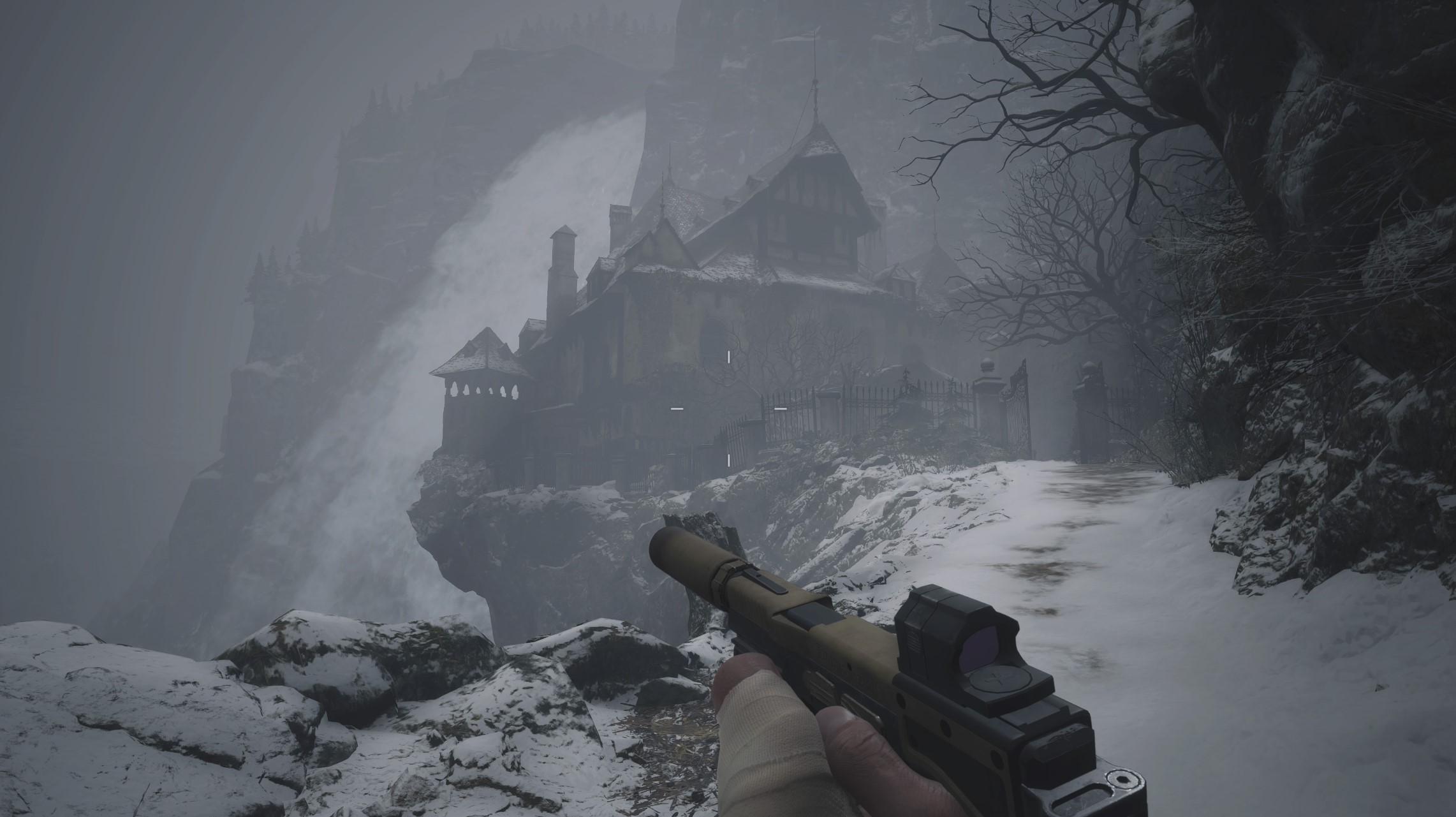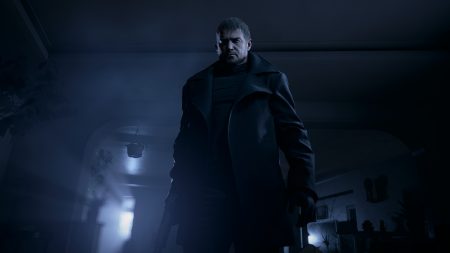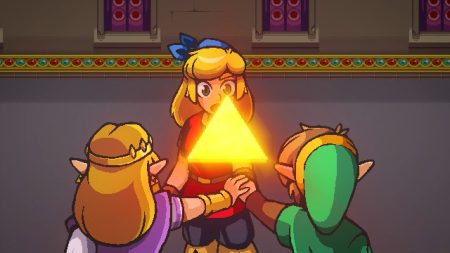A Blink to the Past
About halfway through my initial playthrough of Resident Evil Village, the eighth mainline entry in the Resident Evil franchise, it hit me: What this game reminded me of most wasn’t its direct predecessor (Resident Evil 7) nor the Eurocentric, action-oriented entry that helped redefine the series (Resident Evil 4). I thought of The Legend of Zelda series, which on its surface shares virtually nothing with the 25-year-old survival horror brand. Despite lacking the fantastical whimsy of the flagship Nintendo series, the very structure of RE Village almost mirrors that of a Zelda game, just with some more scares (and considerably more bullets).
The game starts with Ethan Winters, the protagonist from RE7, experiencing yet another traumatic event (the apparent death of his wife) and finding himself lost in a mysterious village in search of his infant daughter, Rose. In order to save his little princess, he must travel to various points of interest in and around this village, including a dilapidated factory and haunted castle, to collect several macguffins, each one protected by a particular set of villains. Once the macguffins are collected, the title enters its endgame sequence, which involves a series of near-cataclysmic events and a final showdown with the game’s primary antagonist.
Obviously, I’m being vague in my explanation of the plot not just to avoid spoilers, but also to underscore how what I just described applies to most Zelda games. They all include some version of rescuing the princess and saving the kingdom (just like Rose and the Village), a number of different dungeons containing unique puzzles and items, bosses that are surpassed typically through problem-solving in addition to pure force, mini-bosses that can be more daunting than main bosses, and a hub world with tons of secrets to find, many of which become more accessible as the player acquires new tools throughout their adventure.

The Evil is in the Details
Beyond the overall structures of the games themselves, many of my favorite moments and details in RE Village share similarities with the best aspects of games like Ocarina of Time and A Link to the Past. Finding a well wheel or special key in Village after passing by so many places where I couldn’t use them before opened up the world to new possibilities, just like finding the hookshot or bomb bag in a Zelda game allowed me to go back and discover tons of hidden goodies. Also, every main “dungeon” in Village includes optional maps so players can find additional treasures and items, just like in Zelda.
In addition, my general wanderlust in Village ultimately led me to finding better weapons and weapon upgrades, including the magnum, which made later action sequences much less daunting. It reminded me of how, in A Link to the Past, happening upon a particular waterfall gave me a boomerang upgrade that made combat so much easier in later dungeons.

Horror-cle of Ages
Broadly speaking, however, Resident Evil Village shares nothing in common narratively with Zelda games. Village’s story of revenge is laced with pessimism and terror, with the game’s major plot moments containing gory body horror, giant vampire ladies, killer androids with power tools for arms, and one of the most horrifying babies of all time. Zelda games typically don’t feature these kinds of scares (or really any at all) and instead present colorful worlds with uplifting music, cheery characters, and a general sense of optimism that things will work out.
Still, looking past the overarching themes and narrative through lines, one can see where these seemingly different storylines may align. Ocarina of Time begins with Link navigating through the comfort of his own home of the Kokiri Forest, only to eventually realize he needs to go on a quest that begins by venturing through the open fields of Hyrule. Resident Evil Village begins with Ethan Winters spending quality time with his family in the comfort of his own home, only to be dragged out into the open, action-packed, titular village.
In both cases, the protagonist exists in a low-risk space but is ultimately forced to explore a vast and unfamiliar environment. Sure, the circumstances governing each plot are different, and the broad and beautiful fields of Hyrule are much more inviting than the broken and empty village that Ethan must traverse. But each game seeks to push the player into bigger spaces and bigger challenges, in both cases to establish a sense of curiosity. It may just be one example, but the relationship between open and closed spaces is essential to the overall pacing of Zelda stories, and the same is true for the latest Resident Evil.

Final Thoughts
I’m already well into my second playthrough of Village, and I’m consistently struck by how it brings out many of the same feelings that come with a Zelda game. Obviously, Village is a lot more terrifying and bloody than anything Nintendo makes, but in many ways both are trying to achieve some version of the same end—making the player feel smart, powerful, and capable of weathering any challenges, even if RE Village also aims to make the player feel fear and panic. Every foray into a new part of the village carries both anxiety and wonder, as I must brace myself for new challenges that I can’t wait to see.
It’s definitely not as well-rounded or joyful as a Zelda game (and nowhere near as long). But the pacing, narrative architecture, and focus on targeted exploration found in Resident Evil Village conjures a similar kind of excitement and pleasure.
For more on Resident Evil Village, check out our review.
Sam has been playing video games since his earliest years and has been writing about them since 2016. He’s a big fan of Nintendo games and complaining about The Last of Us Part II. You either agree wholeheartedly with his opinions or despise them. There is no in between.
A lifelong New Yorker, Sam views gaming as far more than a silly little pastime, and hopes though critical analysis and in-depth reviews to better understand the medium's artistic merit.
Twitter: @sam_martinelli.










